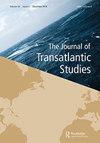俄罗斯崛起后的北约搭便车:2009 - 2019年北约的成本分担、搭便车和选择性激励
Q1 Arts and Humanities
引用次数: 0
摘要
在北大西洋公约组织(NATO)的责任分担辩论中,由于关注产出指标而出现了一段相对优异的表现后,我们提出了这样一个问题:回归到乌克兰战争前的投入指标是否意味着较小的北约盟国已经回到了北约表现不佳的边缘地位?根据威慑模型,较小的盟友比中等规模的盟友更容易搭便车。利用公共选择理论的见解,我们的分析表明,首先,没有证据支持北约成员国GDP的规模决定了国防开支占GDP的比例。其次,选择性激励往往会降低小盟友搭便车的动机。因此,GDP与用于国防能力的GDP比例之间的关系取决于单个成员国的净收益。当我们控制暴露的边界时,被定性为公共产品的防御能力表明,国防支出占GDP的比例更高。我们的结论表明,尽管小型盟友继续搭便车,但由于2009年至2019年期间存在选择性激励,他们的行为低于预期。本文章由计算机程序翻译,如有差异,请以英文原文为准。
Free riding in NATO after the Rise of Russia: cost sharing, free riding and selective incentives in NATO from 2009 to 2019
Abstract After a period of relative overperformance due to the focus on output indicators in the North Atlantic Treaty Organization’s (NATO) burden-sharing debate, we ask whether the shift back to input indicators prior to the Ukraine War meant that the smaller NATO allies have returned to their fringe position as NATO underperformers. According to the deterrence model, smaller allies are induced to free ride to a higher degree than mid-sized allies. Utilizing insights from public choice theory, our analysis demonstrates, first, that there is no support to the claim that the size of NATO member state GDP determines the percentage of GDP spent on defence. Second, selective incentives tend to reduce the incentive for small allies to free ride. The relationship between GDP and the percentage of GDP spent on defence capabilities is therefore conditional upon the net gain of the individual member state. Defence capabilities that are characterized as a public good when we control for exposed borders indicate a higher percentage of GDP spent on defence. Our conclusions show that even though small allies continue to free ride, they do so less than expected due to the existence of selective incentives in the period from 2009-2019.
求助全文
通过发布文献求助,成功后即可免费获取论文全文。
去求助
来源期刊

Journal of Transatlantic Studies
Arts and Humanities-History
CiteScore
0.90
自引率
0.00%
发文量
15
期刊介绍:
The Journal of Transatlantic Studies is the official journal of the Transatlantic Studies Association. It began publication in 2003. The focus is on the transatlantic region broadly defined to include the Americas and the Caribbean in the west and Europe extending to Russia the Middle East and Africa in the east.The Journal explores and provides multi-disciplinary analysis of this vital region of the world through engagement principally with: - History - Literature - IR and Security Studies - International Law and Organisation - Culture and Race - Slavery and Migration - Film - Economics and Business Studies - Planning and the Environment It is published quarterly and accepts proposals for themed issues as well as individual articles between 5-12,000 words in length. It also has a short book review section. Two peer reviewers evaluate all submissions and any manuscript that divides opinion is then submitted to a third peer reviewer for a final decision. The JTS aims to provide decisions on submissions within 12 weeks.
 求助内容:
求助内容: 应助结果提醒方式:
应助结果提醒方式:


